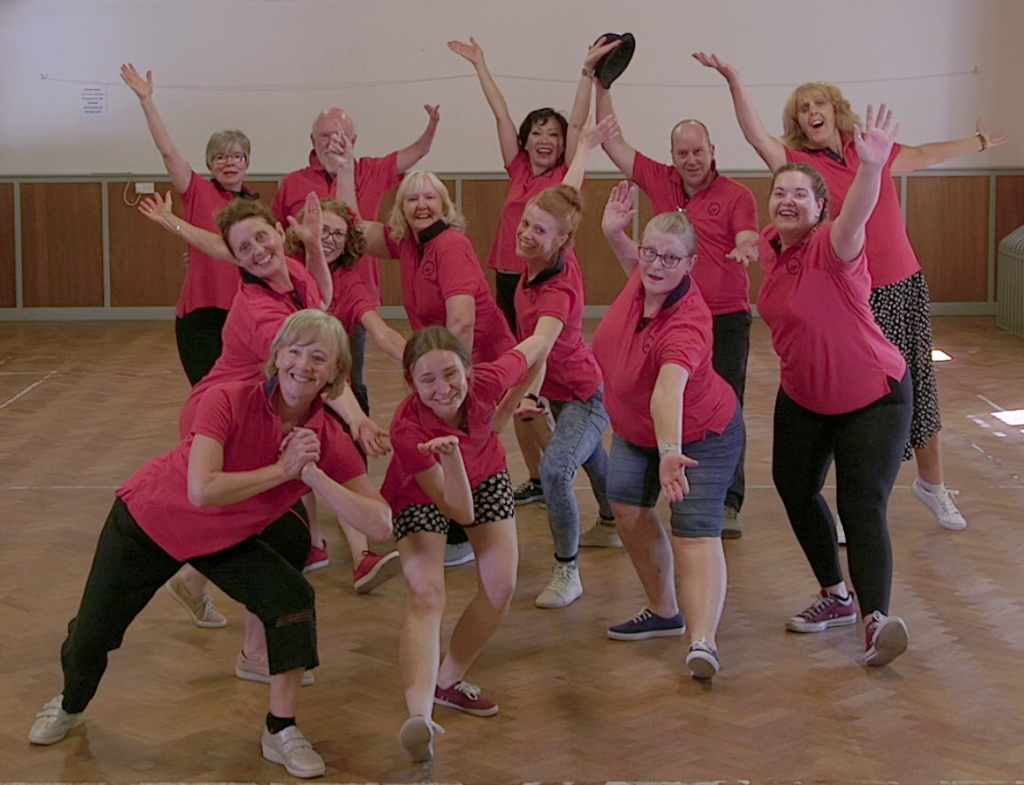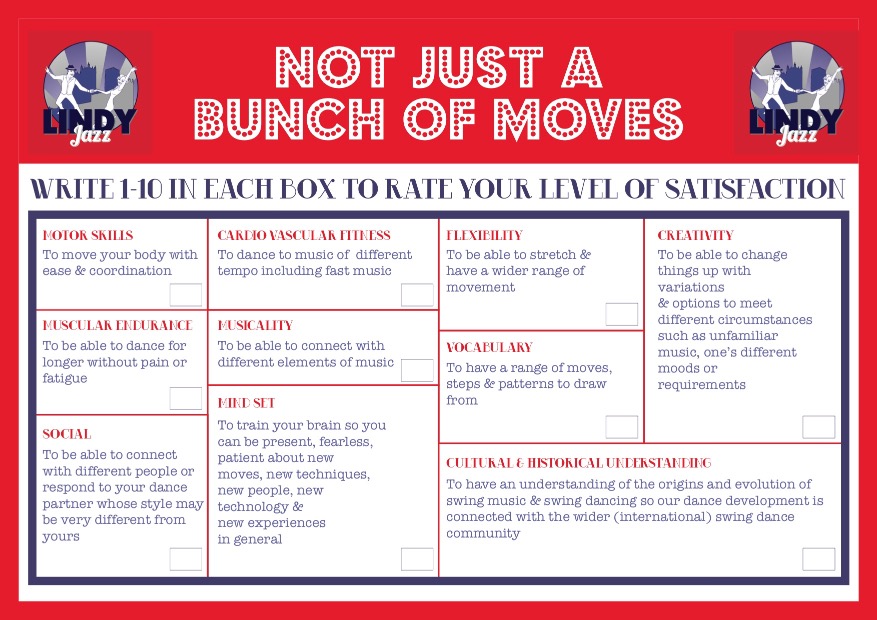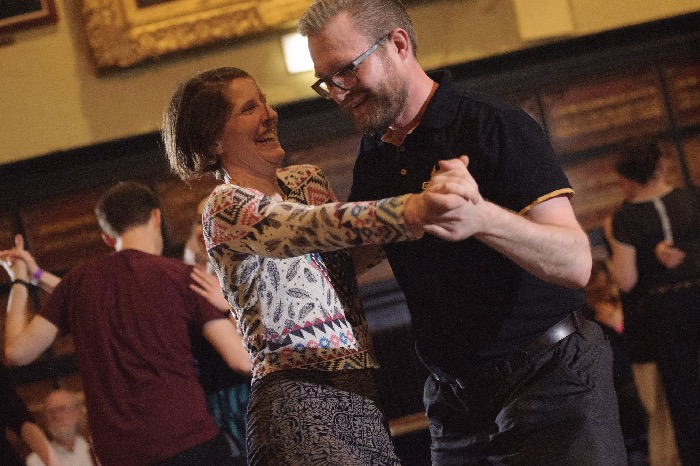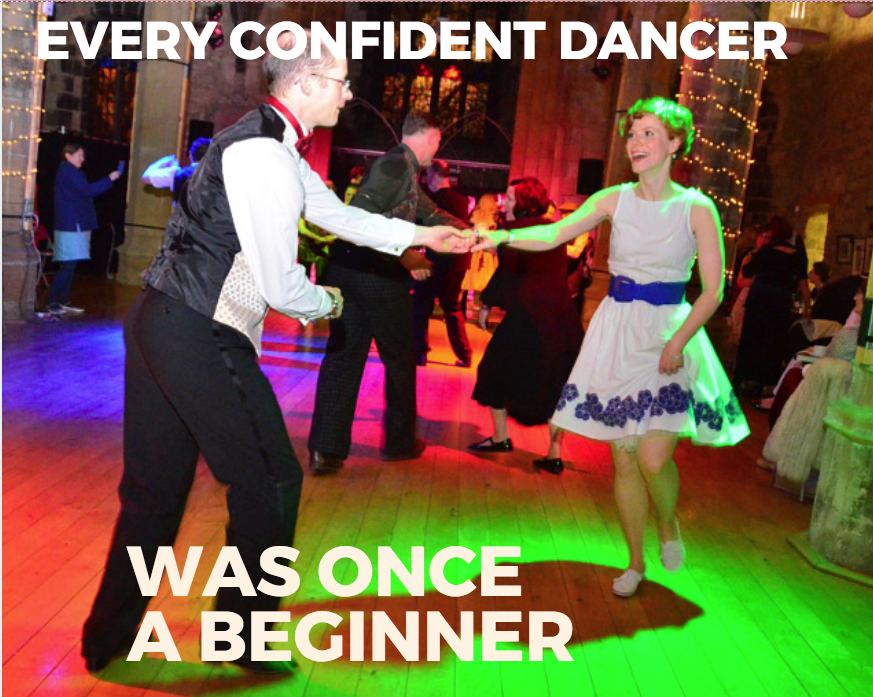So, you’ve been swing dancing for a while, and you’re no longer a ‘newbie.’ Next stop for you, you want to be an awesome dancer. However, there are a few things that are getting in your way.
- You are short on time and want to get to grips with new moves as quickly and as easily as possible;
- You are short on patience and you want to fast forward to being an awesome dancer NOW!;
- You are sometimes short on energy and you’re worried that you won’t be able to keep up with anything complicated, or even get your head around it in the first place.
Well, let me remind you of my mantra.
If you want to be an awesome dancer, you have to learn to RELAX, RELEASE, and RECEIVE.
Relax, Release, Receive: The Steps to Discovering the Joy of Swing Dance
Let’s look at how this might work.
Say you find yourself feeling confused in lessons at times when new, unfamiliar concepts or movements are introduced. It’s normal to feel uncomfortable when your comfort zone is stretched. What’s your default reaction? You probably feel the need to seek what is comfortable, familiar, and easy to implement. If you feel like this is not available to you, you might want to throw your hands up in the air and give up.
But what if you just kept going and kept following the lesson?
It’s a bit like when I’m driving through an unfamiliar place and I feel lost. I have my sat nav to guide me, but how many of us have trust issues with our sat nav. We need it, but we doubt that it can get us to where we want to go. Then we feel that familiar tension of ‘should I follow the instructions or not?’
Whether you’re feeling confused in a Swing Dance class (in person or on Zoom) or you’re trying to trust your sat nav, here’s what you need to do.
RELAX– Just take a breath and decide to keep following the instructions.
RELEASE– Stay with the ‘not knowing’ or ‘I’m confused’ feeling for a few minutes. You don’t need to understand everything immediately. It’s okay to not be clear on everything, every step of the way.
RECEIVE– After you’ve relaxed and released the need to understand everything and get it right, everything will come together. I promise that by the end of your lesson or course, there’ll be no more confusion!
Why Our Courses Help Your To Be Awesome Dancers
In our taster-style dance classes which are often presented at events as a one-off experience, you are invited to copy the teacher and dance along. This way you get quick results and everyone is happy!
When you attend a Lindy Jazz course, you get much more than a ‘copy along’ class. You get to develop real and lasting skills so you have a clearer understanding of Swing Dance. This is what will help you dance with style and confidence. The second way of learning takes a little more time, but what you invest, you get back out. By the end of your course, you’ll be so pleased with the way you dance.
Are you New to Dancing?
Your Lindy Jazz teachers know how scary it feels to try something new if you’ve never danced before. That’s why we’ll always be gentle with you and help you to take the easy steps to building some great foundations so everything makes sense.
No Longer New?
Are you itching to take your dancing to the next level? It’s time to be adventurous! Don’t forget, your reptilian brain may be triggered when it’s faced with something new and unfamiliar. The ‘panic’ brain over works and over thinks in an effort to protect us from anything we aren’t familiar with. Switch on your ‘thinking’ brain if you can and this will help you focus on the class and all the wonderful new moves you are learning!
Dancing is all about having fun. We don’t take it too seriously, and neither should you.
What we are serious about is helping you discover the joy of Swing Dance.
Are you ready to feel the fear and become an awesome dancer anyway?
You’ve been Swing dancing for a while, and you’re no longer a ‘newbie.’ Next stop for you, you want to be an awesome dancer. However, there are a few things that are getting in your way.
- You are short on time and want to get to grips with new steps and routines as quickly and as easily as possible;
- You are short on patience and you want to fast forward to being an awesome dancer NOW!;
- You are sometimes short on energy and you’re worried that you won’t be able to keep up with anything complicated, or even get your head around it in the first place.
Well, let me remind you of my mantra.
If you want to be an awesome dancer, you have to learn to RELAX, RELEASE, and RECEIVE.
Relax, Release, Receive: The Steps to Discovering the Joy of Swing Dance
Let’s look at how this might work.
Say you find yourself feeling confused in lessons at times when new, unfamiliar concepts or movements are introduced. It’s normal to feel uncomfortable when your comfort zone is stretched. What’s your default reaction? You probably feel the need to seek what is comfortable, familiar, and easy to implement. If you feel like this is not available to you, you might want to throw your hands up in the air and give up.
But what if you just kept going and kept following the lesson?
It’s a bit like when I’m driving through an unfamiliar place and I feel lost. I have my sat nav to guide me, but how many of us have trust issues with our sat nav. We need it, but we doubt that it can get us to where we want to go. Then we feel that familiar tension of ‘should I follow the instructions or not?’
Whether you’re feeling confused in a Swing Dance class (in person or on Zoom) or you’re trying to trust your sat nav, here’s what you need to do.
RELAX- Just take a breath and decide to keep following the instructions.
RELEASE- Stay with the ‘not knowing’ or ‘I’m confused’ feeling for a few minutes. You don’t need to understand everything immediately. It’s okay to not be clear on everything, every step of the way.
RECEIVE- After you’ve relaxed and released the need to understand everything and get it right, everything will come together. I promise that by the end of your lesson or course, there’ll be no more confusion!
How Our Courses Help You To be An Awesome Dancer
In our taster-style dance classes which are often presented at events as a one-off experience, you are invited to copy the teacher and dance along. This way you get quick results and everyone is happy!
When you attend a Lindy Jazz course, you get much more than a ‘copy along’ class. You get to develop real and lasting skills so you have a clearer understanding of Swing Dance. This is what will help you dance with style and confidence. The second way of learning takes a little more time, but what you invest, you get back out. By the end of your course, you’ll be so pleased with the way you dance.
Are you New to Dancing?
Your Lindy Jazz teachers know how scary it feels to try something new if you’ve never danced before. That’s why we’ll always be gentle with you and help you to take the easy steps to building some great foundations so everything makes sense.
No Longer New?
Are you itching to take your dancing to the next level? It’s time to be adventurous! Don’t forget, your reptilian brain may be triggered when it’s faced with something new and unfamiliar. The reptilian brain over works and over thinks in an effort to protect us from anything we aren’t familiar with. Switch on your ‘thinking’ brain if you can and this will help you focus on the class and all the wonderful new moves you are learning!
Dancing is all about having fun. We don’t take it too seriously, and neither should you.
What we are serious about is helping you discover the joy of Swing Dance.
Are you ready to feel the fear and become an awesome dancer anyway?
Remember, when you feel uncomfortable, you’re learning & you’re improving!






